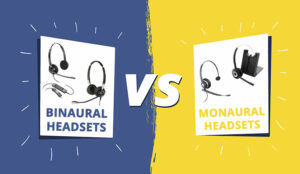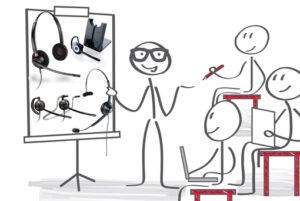Over time, we’ve seen a lot of change in both the role of the call centre and how it operates. In many cases, the contact centre used to be a distinct area of a business – separated physically, technologically, and culturally. Now, the call centre has evolved to be integrated with the wider business, as organizations shift from seeing this as a cost centre to recognizing the value of great customer experiences.
The Acceleration of Hybrid Working Environments
The shift towards hybrid working models has been dramatically accelerated in 2020, driving forward the evolution of call centres and creating new challenges and opportunities to set up employees for success. The unfortunate COVID-19 pandemic has caused a reliance on call centres while in-person and face-to-face services decline. This puts remote customer engagement in the spotlight – making it more crucial than ever that employees are supported with the right tools.
The CCMA has been working closely with the Department of Business, Energy and Industrial Strategy (BEIS) to identify how call centres have been affected by COVID-19 and how they might be affected by future events. Their joint report, Voice of the Industry, Contact Centers Response to COVID-19, found that:
- 83% of call centres will move towards a business model that includes an increase in the number of staff working from home on a full- or part-time basis
- 83% have invested in technology for employees
- 73% plan to change shift patterns before Christmas
- 21% of roles will change in the call centre
The CCMA and BEIS report offers encouraging news, indicating that employees will have the ability to work from anywhere, at a time that suits them. Enterprise-grade technology such as headsets and next-generation desk phones will enable them to do this effectively. Offering this flexibility will also increase your talent pool and employee loyalty.
Improving Customer Service Amidst New Challenges
Maintaining a high level of customer satisfaction against a backdrop of rising, unpredictable demand for call centre services is no easy task. At the same time that consumers can’t access in-person services, they are also experiencing increasingly stressful and complex personal and work scenarios.
A study by British Telecom found that only 21% of consumers rate the digital experience of large multinational organizations as ‘excellent’, making it imperative that we focus on voice calls and delivering a high-quality audio service.
Customers require empathetic customer service representatives that keep lines of communication open. Voice is the best channel for these complex interactions, but calls can make or break relationships with customers.
Equipping employees with enterprise-grade audio solutions that work across multiple environments and endpoints is critical to set CSRs up for success. The right technology, with crystal clear audio and active noise-canceling will produce more efficient calls with reduced background noise and, therefore, fewer mistakes and increased customer satisfaction.
Headsets such as the EncorePro 700 series offer all-day comfort for intensive phone users with simple controls to easily manage and switch between calls. Call clarity with customers is ensured with excellent microphone pick-up and noise-cancelling features.
Maximize Hybrid Working Environments With the Right Equipment
Importantly, headset solutions need to transition across any workspace so teams can work efficiently whether at home or in the office. When it comes to the spaces we work in, the emphasis is moving to create the best environments for employees to be productive, rather than considering a fixed location.
It can be challenging for IT and facilities teams to manage newly dispersed devices. Fortunately, most headsets sold today connect through USB ports and are visible to cloud management systems, which means they can be audited.
For the most productive call centre, Poly Lens software ensures only company-approved headsets are used to ensure enterprise-grade experiences. The user and customer experiences are seamless, insights on the use of endpoints and workspaces can be gained, and any maintenance needs are monitored. Additionally, a conversational analysis tool gives the data needed to hone agents’ customer experience skills.
Thanks to Sof Socratous – Vice President, Sales Northern Europe, Poly, for this article.
Author: Robyn Coppell
Published On: 23rd Sep 2020 - Last modified: 30th Sep 2020
Read more about - Guest Blogs, Poly















